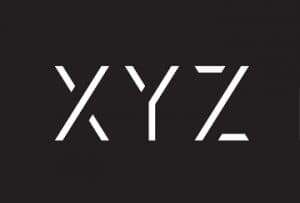Generation X, Y and Z
Will Lewis | 01 December 2015
When we sit down with a landlord client to talk about a leasing strategy for their building, there are a whole host of questions that come up: what should the tone and atmosphere of the reception be like, what should be done with the common areas (those outside a company’s offices), what sort of facilities need to be improved or added, and, let’s not forget, how should it be branded – how do you want the building to ‘speak’ to people, and who should it be speaking to?
Exactly who buildings are ‘for’ isn’t so much the issue – to cut a long story short, they’re for everyone who will use them – but a building’s style and appearance can be tailored to very different specifications, even in the case of two similar buildings next door to each other. If the idea is to target young, sparky tech start-ups and creative agencies, there will, traditionally at least, be a very different feel to an office block being marketed to professional services occupiers or government bodies. Different strokes for different folks, as they used to say.
There’s been something of a change in this area, due to several factors. As professionals and others have become less regimented, adopting open-plan offices and less formal hierarchies, their workplaces have become brighter, more welcoming spaces. The rise of mobile, flexible working and smart settings for offices has meant that when people move to a new office, they don’t need as many desks, freeing up space for breakout areas, coffee bars, and so on. Walk into any big professional services firm now, and you’ll find a double-height reception, ‘wow-factor’ meeting rooms and good coffee – it’s what people expect.
It comes back to who offices are ‘by’ – both the developers and designers, but also those within companies who are signing off on the fit-out – and who they’re ‘for’ – the employees and to some extent clients and visitors. For some time now, we’ve been in a situation where most of the decisions taken are by those of ‘Generation X’ – those born between 1960 and 1980. A bit less conservative than the preceding ‘baby boomer’ generation, Gen X people haven’t grown up with tech as they now know it, but are deeply conscious that an ever-increasing percentage of their people are of ‘Generation Y’ – also known as Millennials, these are those born from the 1980s to 2000.
They’re more shaped by technology because it’s all they’ve ever known. Increasingly, we’re now seeing Gen Y-ers, whether they are entrepreneurs housing their business or young designers and developers, being in positions to make property decisions, so more and more conventions are being broken. Older developers savvy enough to see where the market’s going are onto this too, creating yet more momentum. The gap between what was once seen as the ‘professional’ and the more ‘out-there’ stuff has narrowed and will continue to do so – law firm Shoosmiths’ move to the XYZ Building in Spinningfields sends out a real signal.
Next up is Generation Z (although where we go after that is up for debate – Generation AA, maybe?) – those born just prior to or after the year 2000. Labelled by US advertising agency Sparks & Honey as the ‘first tribe of true digital natives,’ they’ve also been dubbed post-millennials, screenagers or the iGeneration, they’re not really hitting the workplace yet, but will be soon – so the rules may be about to change once again.


